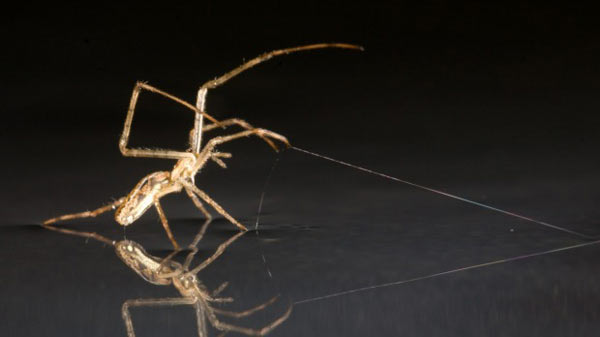
London, UK (BBN)-Spiders can sail across water like ships, using their legs as sails and their silk as an anchor. It's the kind of discovery that makes arachnophobes quiver.
For the first time, British scientists have studied the way spiders maneuver themselves across water.
"We've now found that spiders actively adopt postures that allow them to use the wind direction to control their journey on water," said lead researcher, Morito Hayashi from the Natural History Museum, London, reports The Sydney Morning Herald.
A spider lifts a pair of legs to help it 'sail' across water.
"They even drop silk and stop on the water surface when they want. This ability compensates for the risks of landing on water after the uncontrolled spider flights."
Spiders' airborne ability is already well known. Even naturalist Charles Darwin noted flying spiders would drop onto his ship, the Beagle, when it was kilometres away from the shore.
Many varieties of spider use their silk to catch the wind and be lifted into the air, a technique called ballooning. Spiders can travel up to 30 kilometres a day with the right wind conditions, allowing them to colonise new areas for food and other resources.
But spiders' seafaring skills have only just been uncovered, and published in the scientific journal BMC Evolutionary Biology.
The research team observed hundreds of common variety spiders sailed their way across a tray of water while being puffed with air.
Some spider species adopted weird postures to take advantage of the wind current, such as lifting up a pair of legs. Others would release their silk while on the water, using it like an anchor to slow themselves down or stop altogether.
Another researcher involved in the study, Sara Goodacre from the University of Nottingham, said spiders' ease moving across water "joined the dots" about how they can move from one land mass to another not only by flying but sailing.
"If landing on water poses no problem then in a week or two they could be a long way away from where they started," she said.
BBN/SK/AD